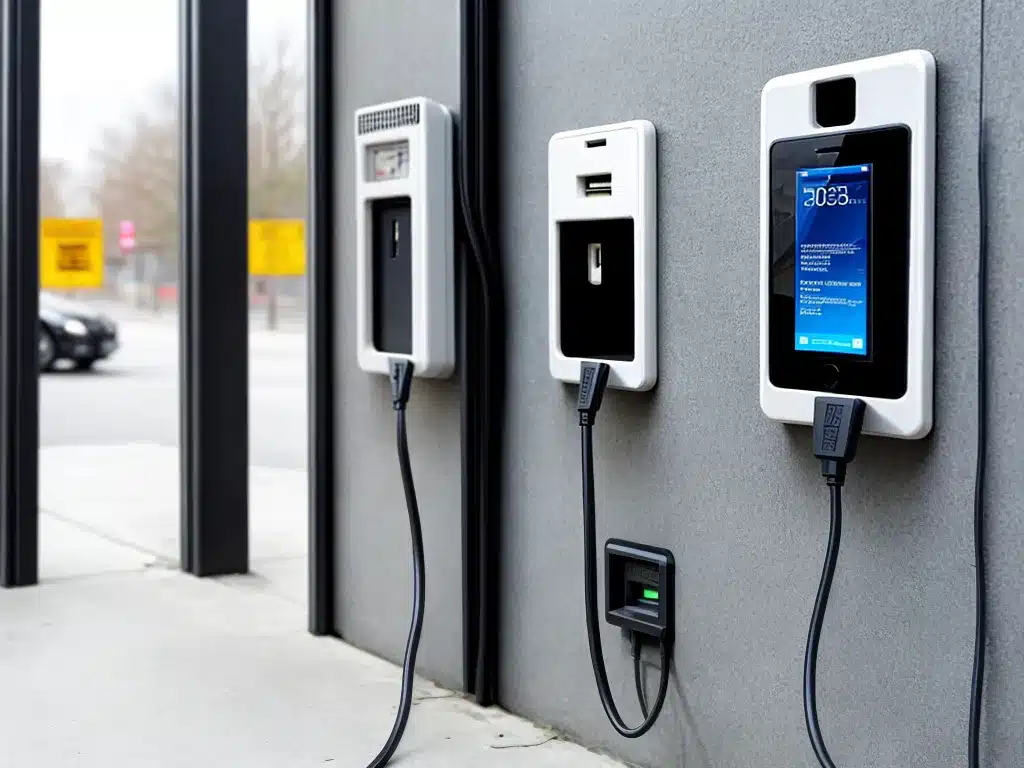Introduction
Public USB charging stations provide a convenient way for people to charge their devices when they’re on the go. However, using public USB ports also comes with potential security risks that users should be aware of. In this article, I will discuss the main security vulnerabilities and threats associated with using public USB charging stations.
Malware Infection
One of the biggest dangers is the possibility of malware infection. Malicious actors can manipulate public USB ports to install malware on connected devices. Once infected, the malware can then steal data and spy on users.
Some ways malware can spread through public USB ports:
- Infected USB cables – Malware resides inside the charging cable itself. When plugged in, it automatically installs.
- Malicious charging stations – The whole charging port is designed to infect devices. All cables plugged in will install malware.
- Juice jacking – Attacker uses the charging port to access data directly. No malware required.
Juice jacking does not need malware. The attacker gains direct access to siphon data off devices as they charge. This allows them to bypass security defenses.
“Juice jacking is a cyberattack involving charging stations designed to infect the connected device or copy data from it directly” – Norton Security
In public places, always inspect USB ports before using. Avoid using cables provided. Opt for your own instead. Also turn off data transfer if possible.
Data Theft
In addition to malware, public USB ports also pose a data theft risk. Attackers can potentially access, copy, and steal your data directly through the USB connection.
Sensitive personal data at risk includes:
- Passwords, emails, messages
- Contacts, photos
- Financial information
- Location data
- Browsing history
Once a device is connected, skilled hackers can utilize software exploits and other methods to bypass the phone’s defenses and access private data.
“Experts were able to breach the defenses of a smartphone via its USB port in less than five minutes.” – Kaspersky Lab Study
To better protect your data, avoid using public USB ports for extended periods. Also turn on device encryption if available.
Damaging Hardware
Beyond digital threats, public USB charging stations also pose a physical hardware hazard.
Faulty, cheap, or poorly designed ports and cables can potentially damage devices during charging.
Some ways charging can damage your device:
- Overcharging – Charging beyond battery capacity degrades life.
- Overheating – Excessive heat damages battery and internal components.
- Power surges – Spikes in power fry sensitive circuits.
- Short-circuiting – Direct short will instantly damage electronics.
Charging kiosks have less regulation and oversight compared to reputable stores. To avoid hardware damage:
- Use your own charging cable when possible.
- Inspect ports for damage before connecting.
- Avoid leaving devices plugged in unattended.
- Disconnect immediately if you notice overheating.
Best Practices for Public Charging Security
To minimize risks, here are some best practices to follow when using public USB charging stations:
- Carry your own wall charger and cable when possible. Avoid using public cables.
- Use AC power outlets over USB whenever available.
- Only plug into ports with tamper-resistant seals, at reputable locations.
- Never leave devices unattended while charging. Stay nearby to monitor.
- Disable data transfer if the option is available. Enable airplane mode.
- Avoid charging extensively. Use public stations for quick battery boosts only.
- Periodically scan devices for malware after public charging.
While convenient, public USB charging does carry inherent security and safety risks. Following these tips will help minimize the dangers. But ultimately, restraint and vigilance is required any time you plug into a public port.
Conclusion
Public USB charging stations provide a quick and convenient way to charge on the go. However, the public ports also carry potential security risks that users should seriously consider. Major threats include possible malware infections, data theft, and even physical hardware damage. To stay safe, travelers should only use public stations with great caution. Carry your own cables, disable data transfer, and avoid extended charging. While public chargers can be extremely handy, they require vigilance to use securely.












